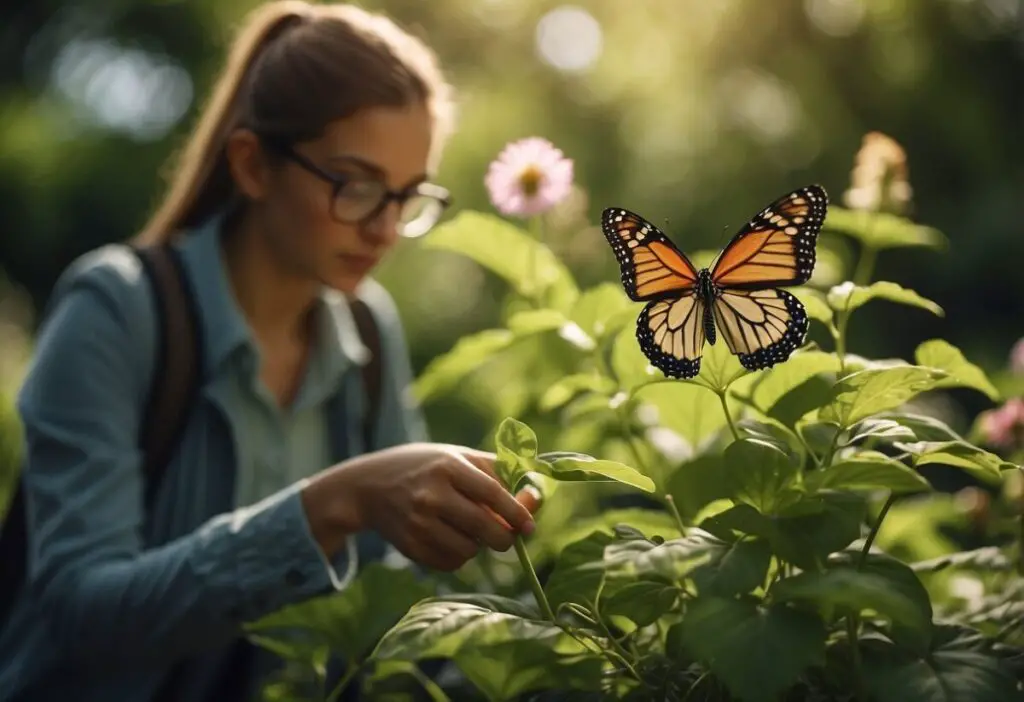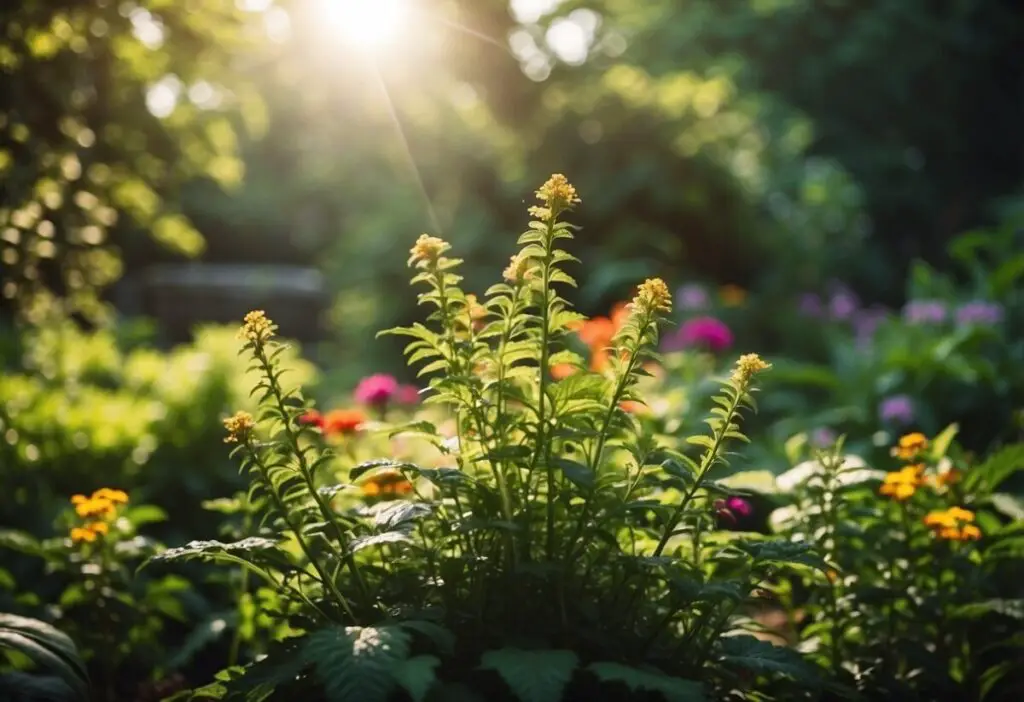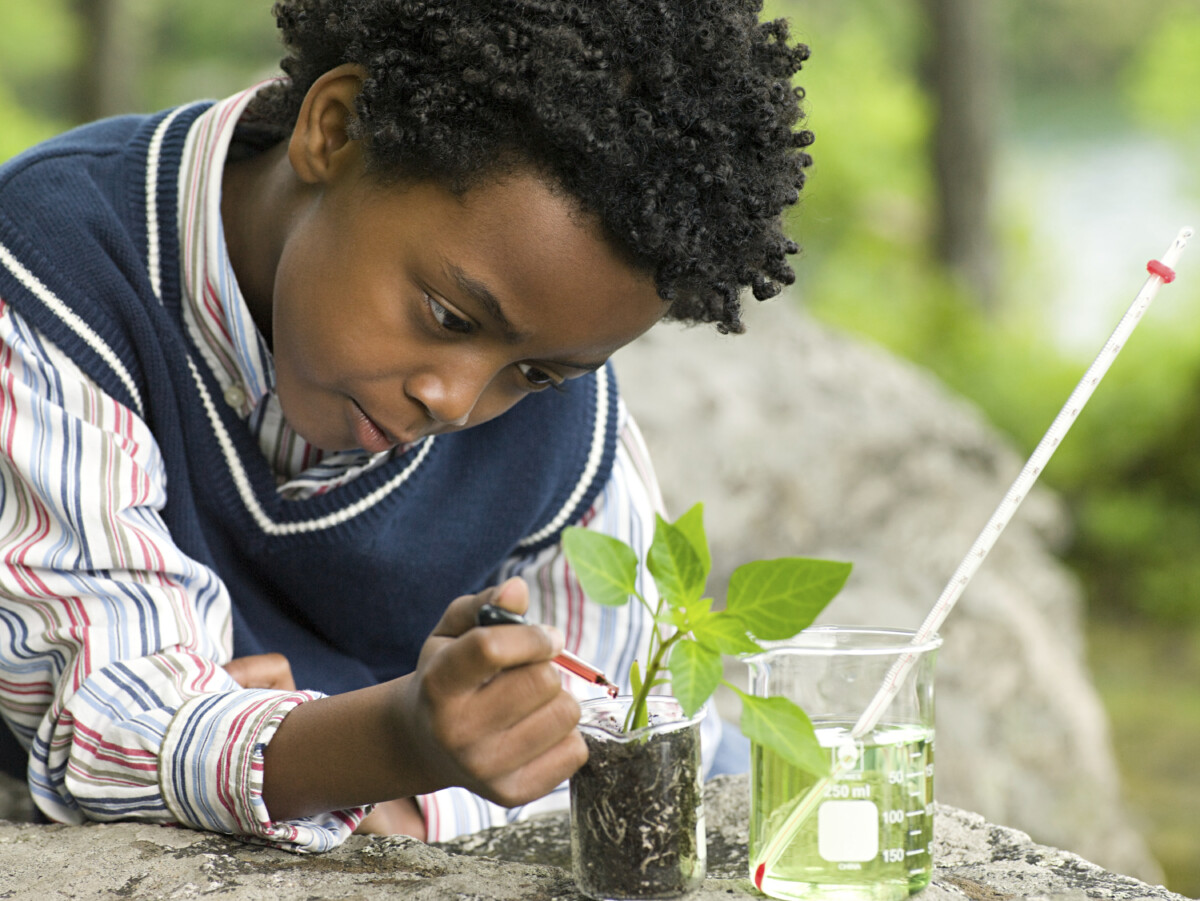Exploring plant science can be an exciting and educational adventure for kids of all ages. By engaging in hands-on activities such as observing the plant life cycle from seed to adult plant, children not only learn valuable STEM lessons but also develop a deeper appreciation for nature.
Plant science activities are perfect for fostering curiosity and encouraging scientific thinking.

Activities like the floating leaf disk experiment, where you observe oxygen production during photosynthesis, make complex concepts accessible to young minds. These experiments can easily be done at home or in a classroom setting, making science both fun and interactive.
For a broader range of plant science projects, you can explore various resources that offer lessons and activities suitable for different grade levels. Interactive games, quizzes, and science fair projects available online provide diverse ways to learn about botanics in an engaging and entertaining manner.
What Is Plant Science?

Plant science, also known as botany, involves the study of plant life. Understanding this science helps in appreciating the vital role plants play in our ecosystem and everyday lives.
Defining Botany
Botany is a branch of biology that focuses on the study of plants. This includes their structure, properties, and biochemical processes. As a botanist, you would explore various plant species, their genetics, and how they interact with the environment.
Activities like observing root growth or understanding photosynthesis illustrate key topics in botany. Essential concepts in botany include plant physiology, which examines how plants function, and plant ecology, studying how plants interact with their surroundings.
The Importance of Plants
Plants are crucial for life on Earth. They produce oxygen through photosynthesis, which is vital for human and animal survival. Studying plant science helps you understand processes like how plants convert light, water, and carbon dioxide into oxygen.
Additionally, plants are integral to maintaining ecosystems, providing food, and being a source of medicinal compounds. Agronomists use plant science to improve crop yields, which is essential for feeding the growing global population.
By learning about plant science, you gain a deeper appreciation for how plants sustain life and contribute to our well-being.
The Anatomy of Plants
Plants have various parts that each serve essential functions, from absorbing nutrients to facilitating reproduction. Understanding how each part works can help you appreciate the complexity and importance of plants.
Understanding Roots
Roots are the primary structures that anchor a plant into the soil. They absorb water and nutrients, which are vital for the plant’s growth and survival. Root hairs increase the surface area for absorption, making the process more efficient.
Different types of roots, like taproots and fibrous roots, have unique functions. Taproots, such as those found in carrots, penetrate deep into the soil, whereas fibrous roots form a dense network near the soil surface, offering more stability. Both types have specialized cells that actively absorb nutrients and water.
Stems and Plant Support
Stems are crucial for supporting a plant and transporting nutrients and water between the roots and leaves. They contain vascular tissues known as xylem and phloem. Xylem transports water and minerals from the roots to the rest of the plant, while phloem carries sugars and other organic compounds produced during photosynthesis.
Stems also play a role in storing nutrients and facilitating growth. In some plants, stems can be modified to store water or nutrients, as seen in cacti and tubers like potatoes. The structure of the stem, whether woody or herbaceous, determines its strength and flexibility.
Leaves: The Food Factories
Leaves are often called the food factories of a plant because they are the primary sites for photosynthesis, the process by which plants make their own food using sunlight. The structure of a leaf, including the stomata (tiny openings) and the chloroplasts containing chlorophyll, is optimized for absorbing sunlight and exchanging gases.
Different leaf shapes and sizes can affect a plant’s ability to capture sunlight and perform photosynthesis efficiently. Some leaves are broad and flat, maximizing sunlight absorption, while others are narrow to reduce water loss in arid environments. Leaves also play a role in transpiration, which helps to cool the plant and facilitate nutrient uptake.
Flowers and Reproduction
Flowers are the reproductive organs of many plants and are essential for the production of seeds. They consist of several parts, including petals, stamens, and pistils. Petals attract pollinators with their colors and scents, while stamens and pistils are involved in pollen production and fertilization.
The stamen includes the anther and filament, which produce and release pollen. The pistil contains the ovary, style, and stigma. Once pollination occurs, the ovules within the ovary develop into seeds.
Flowers not only facilitate the reproduction of the plant but also attract pollinators, which is crucial for genetic diversity and plant propagation.
Photosynthesis: The Power of Sunlight
Photosynthesis is vital for plants’ survival, converting sunlight into energy. Two crucial components in this process are chlorophyll and the photosynthesis equation.
Chlorophyll and Light
Chlorophyll is a green pigment found in the chloroplasts of plant cells. It captures light energy from the sun, which is necessary for photosynthesis. This pigment makes the leaves appear green because it reflects green light.
When light hits the chlorophyll, it excites electrons and initiates a chain reaction that transforms light energy into chemical energy. This energy is then used to convert carbon dioxide and water into glucose, a type of sugar that plants use as food.
Plants absorb various wavelengths of light, but chlorophyll primarily absorbs blue and red light. In contrast, green light is reflected, which is why you see leaves as green. Without chlorophyll, plants would not be able to utilize sunlight effectively for energy production.
The Photosynthesis Equation
The process of photosynthesis is summarized by the chemical equation:
[ 6CO_2 + 6H_2O + \text{light energy} \xrightarrow{\text{chlorophyll}} C_6H_{12}O_6 + 6O_2 ]
This equation highlights that six molecules of carbon dioxide and six molecules of water, using light energy absorbed by chlorophyll, are converted into one molecule of glucose and six molecules of oxygen.
These products are essential for life on Earth. Glucose serves as an energy source for plants and is also used to build plant structures. The oxygen released is critical for the respiration of almost all living organisms, including humans.
Understanding this equation helps you grasp how fundamental sunlight is in sustaining life through the intricate process of photosynthesis.
Plant Growth and Development
Plants undergo a fascinating journey from seeds to mature plants, responding to their environment in unique ways to ensure survival and growth. Understanding this process involves exploring the transformation from seed to seedling, the different stages of the plant life cycle, and the ways plants adapt to their surroundings.
From Seed to Seedling
A plant’s journey begins with a seed. Each seed contains a tiny embryo and nutrients required for initial growth. When conditions are right—adequate moisture, warmth, and oxygen—the seed germinates. Germination starts with the seed absorbing water, causing it to swell and break open.
Next, the root (radicle) emerges, anchoring the plant and absorbing water and minerals. The shoot, which includes the stem and leaves, grows upwards towards light. The first leaves, called cotyledons, provide the initial food through photosynthesis. During this period, the seedling is highly vulnerable and requires optimal conditions to thrive.
The Plant Life Cycle
The plant life cycle consists of distinct stages: germination, vegetative growth, flowering, pollination, seed formation, and dispersal. After germination, the plant enters the vegetative stage, focusing on growing leaves, stems, and roots.
This stage is crucial for building the plant’s structure and increasing its ability to photosynthesize.
When the plant matures, it enters the reproductive stage and produces flowers. Flowering plants rely on pollinators like bees, birds, or the wind to transfer pollen from one flower to another.
Once pollination occurs, seeds form within fruits, which later disperse to propagate new plants. This cycle ensures species survival and genetic diversity.
How Plants Respond to their Environment
Plants exhibit remarkable adaptability to their environment. They respond to light through phototropism, where stems grow towards light, maximizing photosynthesis. Roots show gravitropism, growing downward to access water and nutrients. Hydrotropism directs root growth towards moisture.
Additionally, plants can sense changes in their surroundings, adjusting to stresses such as drought or high salinity. Some plants close their stomata during water scarcity to limit water loss, while others grow protective structures or produce chemicals to ward off herbivores.
These responses help plants survive and thrive in various conditions, showcasing their extraordinary resilience.
Ecosystems and Plant Biodiversity

Plants play a crucial role in maintaining balanced ecosystems by providing essential nutrients and habitats for other organisms. Understanding the types of ecosystems and the specific roles plants play helps to appreciate their importance.
Types of Ecosystems
Ecosystems vary widely and include forests, grasslands, deserts, and aquatic environments. Each type hosts different plant species adapted to the specific conditions.
- Forests are dense with trees and offer a rich environment for diverse plant life.
- Grasslands have grasses as the dominant vegetation, with few trees.
- Deserts support plants adapted to arid conditions, such as cacti.
- Aquatic ecosystems include freshwater and marine environments, with plants like algae and mangroves.
Each type supports distinct plant species that contribute to the overall biodiversity.
Role of Plants in Habitats
Plants provide food, shelter, and oxygen, essential for the survival of other organisms. Through photosynthesis, they convert sunlight into energy, forming the base of the food web.
Roots stabilize soil, preventing erosion, while leaves contribute to nutrient cycling. Plants also offer habitats for countless animals, insects, and microorganisms. In aquatic ecosystems, plants like algae produce oxygen and serve as primary producers.
Understanding these roles highlights the integral part plants play in maintaining healthy ecosystems and supporting biodiversity.
Conservation and Environmental Impact
Conservation efforts play a vital role in protecting endangered plant species and mitigating the effects of climate change on our environment. Understanding these efforts helps foster a deeper appreciation for the natural world and inspires actionable steps for preservation.
Endangered Plants and Preservation Efforts
Many plants worldwide face extinction due to habitat destruction, invasive species, and climate change. Efforts to preserve these endangered species include creating protected areas like national parks and reserves, which safeguard habitats from human interference.
Seed banks are another essential tool. They store seeds of endangered plants, providing a genetic backup in case these species disappear from their natural habitats.
Botanical gardens also play a crucial role. They cultivate and study endangered species, enabling scientists to understand plant needs and develop strategies for reintroduction into the wild.
Collaborative international programs are vital. Organizations work together to share knowledge, resources, and methodologies for preserving plant biodiversity.
Plants and Climate Change
Climate change impacts plants by altering growing seasons, distribution ranges, and the availability of water and nutrients. Scientists study these changes to predict future impacts and develop strategies to mitigate negative effects.
Reforestation projects are key in combating climate change. Planting trees helps sequester carbon dioxide, a greenhouse gas, from the atmosphere.
Moreover, encouraging the growth of native plant species can enhance an ecosystem’s resilience to climate fluctuations. Natives are typically better adapted to local conditions and require fewer resources.
Research into drought-resistant crops is ongoing. These plants can withstand extreme weather, ensuring food security in changing climates. Efforts also focus on improving agricultural practices to reduce the carbon footprint of farming activities.
Practical Plant Science
Introducing children to practical plant science can be both educational and entertaining. Here are a few simple experiments and activities you can try:
- Leaf Chromatography
- Materials: Leaf, water, alcohol, kitchen paper towel, pencil.
- Steps: Grind a leaf to make a paste. Mix with water and alcohol. Cut a strip of paper towel, hang it from a pencil, and place it in the mixture. Watch the colors separate as they travel up the paper.
- Growing Bulbs in Jars
- Materials: Bulb, glass jar, water.
- Steps: Place the bulb in a jar with water. Ensure the bulb’s base touches the water. Observe the roots and shoots as they grow.
- Flower Dissection
- Materials: Fresh flower, tweezers.
- Steps: Use the tweezers to carefully dissect the flower. Identify different parts like petals, stamens, and pistils. This helps children learn about flower anatomy.
- Hydroponic Gardening
- Materials: Seeds, water, nutrient solution, container.
- Steps: Grow plants in a water-based solution without soil. Measure plant growth and compare with those grown in soil.
- Experiment with Light and Water
- Materials: Plant, water, light source.
- Steps: Place plants in different lighting conditions and water levels. Record growth differences to understand plant needs.
When you incorporate science into fun activities, kids learn effectively. Try these projects to explore the fascinating world of plants with young learners!
Wrapping Up
From seed to superhero, plants are amazing! By diving into plant science, you can become a plant whisperer and unlock the mysteries of the leafy world. Get ready for exploding science experiments, colorful plant projects, and even your own mini plant world! So, grab your magnifying glass, put on your botanist hat, and get ready for a fun exploration of the fascinating world of plants!


